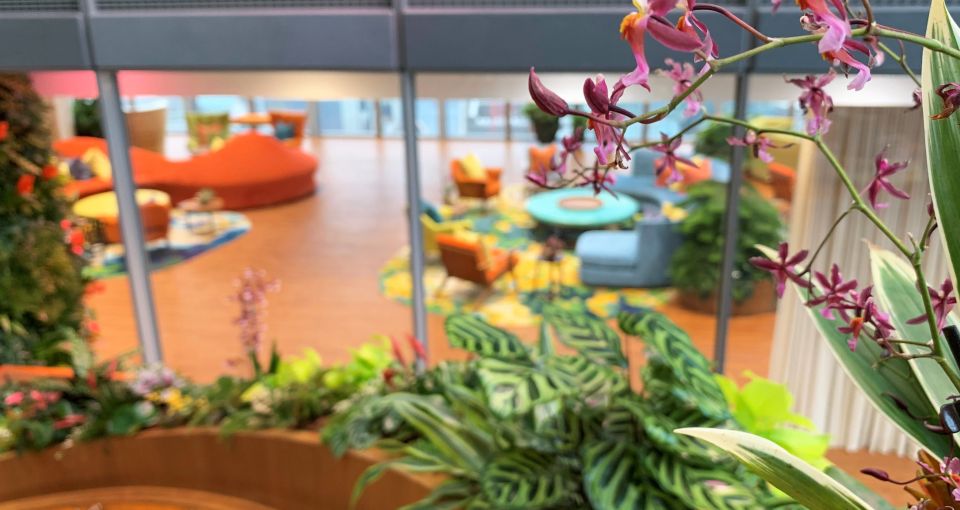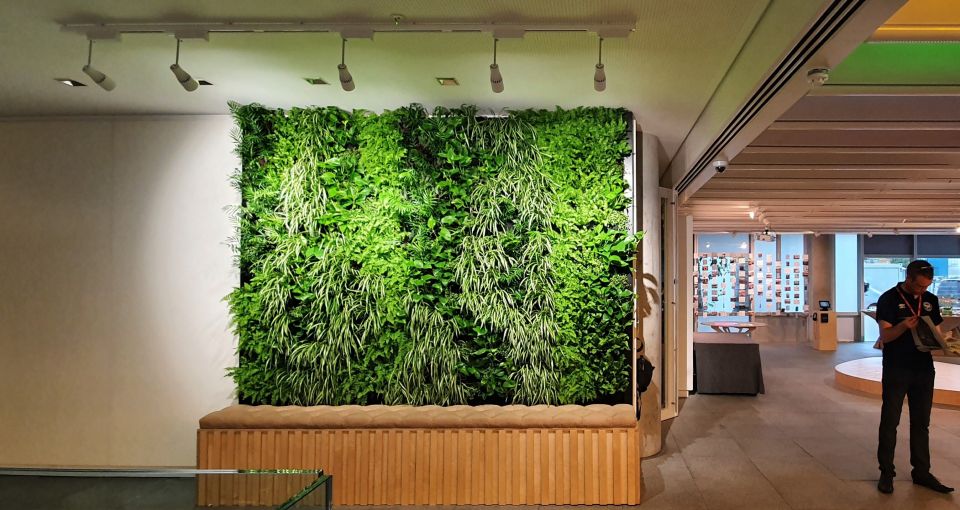Healthier, Greener and More Sustainable: Why Biodiversity is Essential for Future Cities
With 68% of the global population projected to live in urban areas by 2050 according to a report by the UN[1], biodiversity and urban greening are two topics at the forefront of sustainable development.
While cities offer benefits such as technological innovation and economies of scale, there are concerns around how such high-density populations are impacting the climate. Biodiversity is the key to unlocking sustainable cities, supporting eco-systems for plant life and animals, as well as improving the lives of city dwellers.
In this article, we’ll examine why biodiversity is essential for future cities and share some innovative ideas that architects, developers, and planners can implement to make the future of urbanisation more sustainable.
Biodiversity supports the circle of life
Historically, cities have flourished in areas that have access to natural resources. London, Paris and Rome were founded near water, providing transport routes and natural resources to ensure cities could thrive. As populations have expanded and modernised, eco-systems in urban areas have been eroded.
It is vital that we create safe havens for native flora and wildlife. From the trees that provide oxygen to bees that pollinate many of our food sources, we depend on biodiversity to help communities of wildlife and green areas to make cities habitable. Fortunately, creating welcoming habitats in cities doesn’t necessarily require acres of space.
In the UK, allotments and community gardens in urban areas have been proven to have a positive impact on the numbers of pollinating insects, thanks to the inclusion of vegetation such as trees, bushes and even weeds. Furthermore, concerns around dwindling numbers of insects has led to the proliferation of around 60 wildflower meadows in all major UK cities. These small steps toward supporting biodiversity make a huge difference.
Biodiversity reduces urban pollution
In recent years, London has held the title of the most polluted city in Europe, after it was revealed that around two million people are living with dangerously high levels of air pollution[2]. This is a title no city wishes to hold and if we plan to reduce pollution in future cities, planners must think carefully about incorporating green spaces.
Finding ways for native trees and plants to cohabit with the concrete jungle is important for the future of cities, especially as populations grow and the demand for housing continues to rise. Cities across the world are designing clever solutions to include more greenery in unusual places, from vertical forests in Milan which involving planting 800 trees, 4,500 shrubs and 15,000 plants on two residential tower blocks, to living walls[3] which are becoming increasingly popular as a way of promoting biodiversity in restricted urban spaces.
Another great example of this is the Forest for Change[4], featured at the London Design Biennale and installed by Scotscape, which consists of 400 trees from 23 varieties typical of those found across the UK and Europe to create a centrepiece for the event at London’s Somerset House this summer. This clever installation will not only raise awareness of the importance of biodiversity by practically demonstrating how urban forests can be implemented, it will also provide a home for wildlife for the duration of the event.
Biodiversity improves wellbeing
Providing green spaces for urban-dwelling populations is not just good for the environment, it is directly linked to improving wellbeing amongst citizens. In fact, nature is considered so important, that ecotherapy[5] - spending time outdoors as a form of therapy - is a recommended treatment for some mental health conditions.
Creating parkland, urban forests and gardens are all important ways of improving both biodiversity and wellbeing in cities, allowing people to socialise and enjoy outdoor activities, which promotes physical health. In addition to the health benefits of green space, it also provides urban habitats for flora and even birds; according to the Yale School of Environment, cities are home to about 20% of the world’s avian biodiversity[6].
The Natural History Museum launched The Urban Nature Project in 2020, a community initiative which has involved transforming their outdoor space into an urban nature environment. The five-acre site has been transformed to provide a “welcoming, accessible and biologically diverse green space in the heart of London” [7].
Biodiversity encourages more sustainable policies
One of the most pressing reasons for developing more biodiverse cities is that by supporting biodiversity, city planners and urban developers lean toward further sustainable initiatives that will protect the future of cities.
Biodiversity is the gateway for creating greener infrastructure. For example, promoting cycle paths and safe walking routes, encouraging citizens to switch to hybrid and electric vehicles, and looking to introduce clean energy sources to power cities.
Cities account for around 75% of global energy consumption and produces around 7% of cardon dioxide emissions[8], and biodiversity goes hand in hand with introducing policies that ensure biodiverse spaces can flourish, such as reducing reliance on fossil fuels and pollutants that could damage eco-systems within cities.
All things considered, biodiversity is not just about practical solutions, it also involves changing the mindset of urban planning to create more holistic approaches. No matter the approach, it is clear that architects, city planners and developers all have a role to play in building sustainable cities of the future.
Missing the mind-boosting presence of nature? Send us an enquiry at This email address is being protected from spambots. You need JavaScript enabled to view it.
Sources:
[1] https://www.un.org/development/desa/en/news/population/2018-revision-of-world-urbanization-prospects.html
[2] https://www.theguardian.com/environment/2019/apr/01/air-pollution-falling-london-millions-still-exposed
[3] https://www.scotscape.co.uk/projects/living-wall-team-london-bridge
[4] https://www.scotscape.co.uk/news/scotscape-to-install-es-devlins-visionary-forest-for-the-london-design-biennale
[5] https://www.mind.org.uk/information-support/tips-for-everyday-living/nature-and-mental-health/about-ecotherapy-programmes/
[6] https://e360.yale.edu/features/urban_nature_how_to_foster_biodiversity_in_worlds_cities
[7] https://www.nhm.ac.uk/about-us/urban-nature-project.html
[8] https://www.southampton.ac.uk/news/2017/07/how-to-build-a-sustainable-city.page
Useful Links
© Copyright 2024 Scotscape Group Limited. All rights reserverd. Cookie Settings


